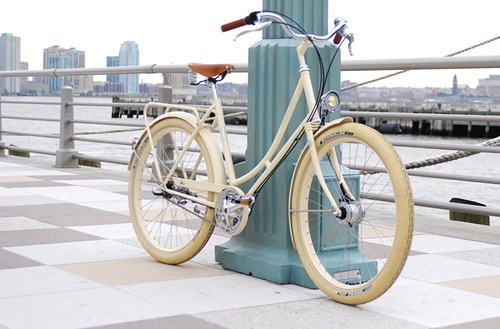
On a recent trip to New York City, I test rode a Retrovelo Klara, courtesy of Adeline Adeline. There are already test ride reports of other Retrovelo models posted here, but the last time I rode one was two years ago and I wanted to see how my impressions of the bike might have changed since. Also, while the Retrovelo I rode previously was the 7-speed Paula, I was curious how the 3-speed Klara would feel in comparison. Finally, my previous Retrovelo test rides took place in Austria and I wanted to compare how the bike handled in a North American city.
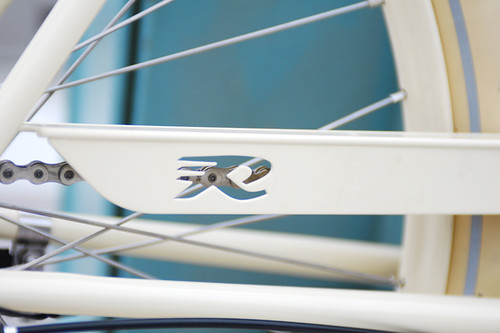
Founded in 2003, Retrovelo is a German manufacturer based in the town of Leipzig. True to the company's name, their classic line of lugged, balloon-tire city bikes in muted colours looks almost overwhelmingly nostalgic. But the "retro" reference is more nuanced than what meets the eye: Behind the facade of an elegant European city bicycle, the Retrovelo is actually a remake of an early mountain bike design. I have described an entire category of such bicycles in an earlier post aboutcity bikes with mountain bike heritage.
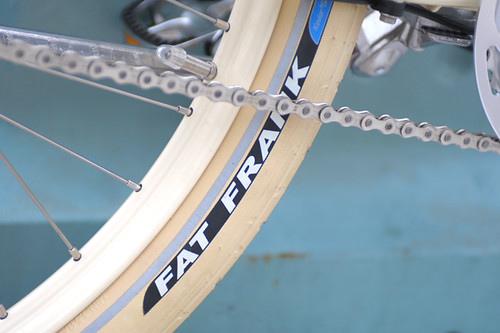
An interesting fact about Retrovelo, is that they were the first company to use the now very popular Schwalbe Fat Frank tires. In fact these were originally made for Retrovelo and named after its designer Frank Patitz. What made the Fat Franks special when they appeared on the market, is that they have the look and cushiness of vintage balloon tires but are impressively fast rolling - making them ideal for navigating pothole ridden city streets and unpaved trails alike.
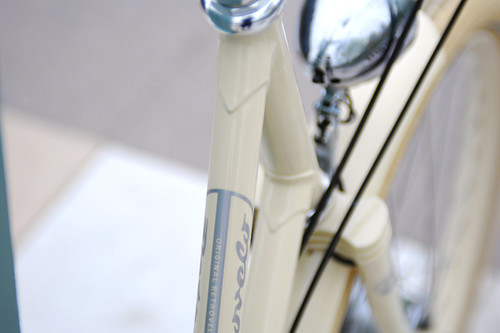
The frame is cro-moly steel, hand-built in Taiwan and finished and assembled in Leipzig (The very first batches of Retrovelo bikes were made in Germany from scratch, but production has since been reorganised).
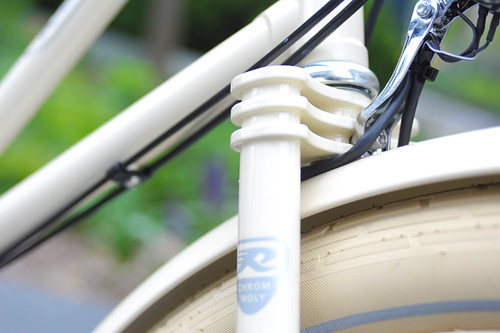
Fully lugged, the most fetish-worthy aspect of the frame's construction is the triple-plate fork crown.
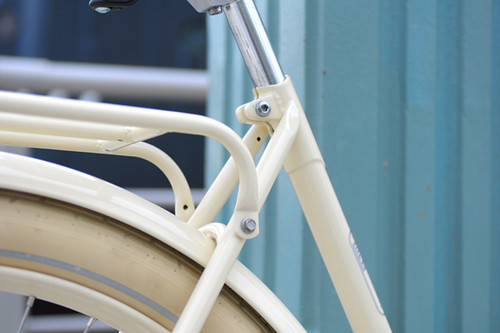
Here is what the seat cluster looks like.
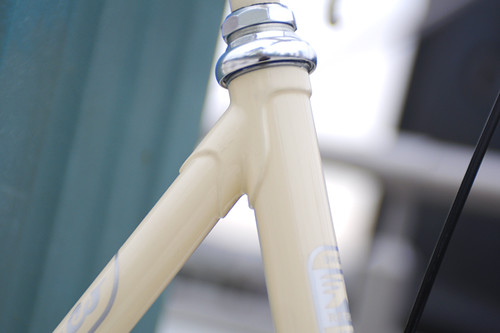
Headtube lug.
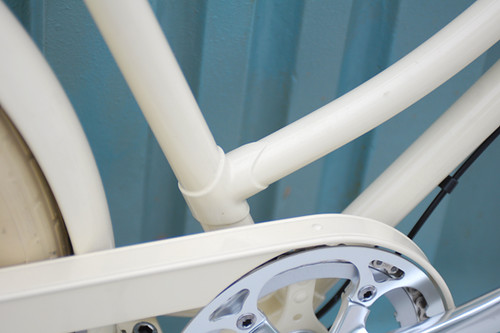
Loop and seat tube junction.
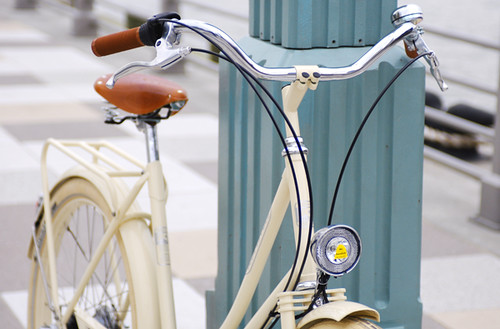
The stem and rear rack are custom made for the bike and powdercoated body colour, as are the chainguard and fenders.

The components on the lady's 3-speed Klara model are pretty straightforward: Shimano Nexus drivetrain withfront and rear roller-hub brakes and dynamo hub,wide swept-back handlebars, large Retrovelo-branded bell,
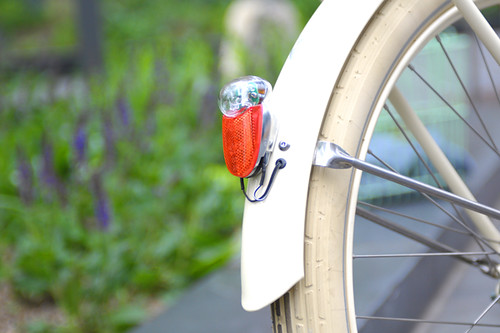
front and rear dynamo lights with standlight feature,
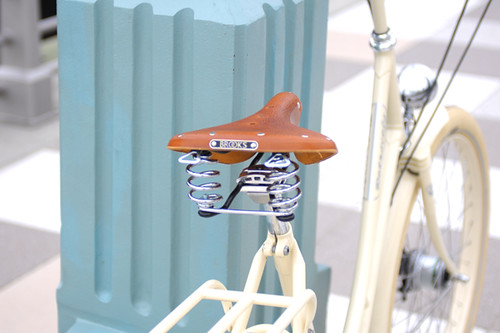
Brooks B67S saddle,
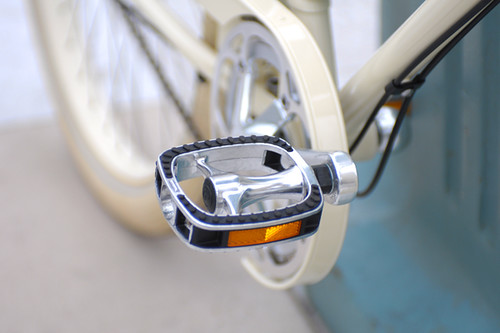
city pedals,
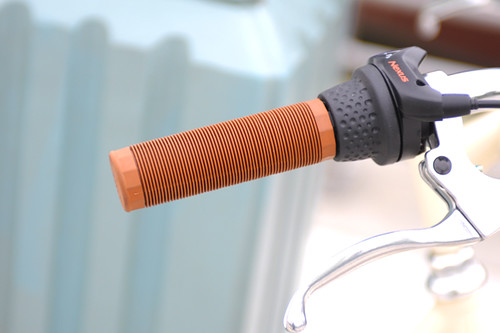
and textured rubber grips.
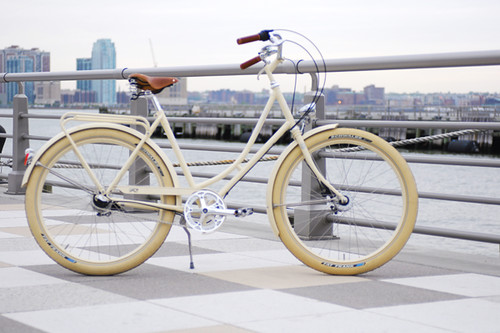
As a complete package, the Retrovelo Klara comes together nicely, equipped with everything necessary for transportation, other than a full chaincase and dressguards. The men's equivalent of this model is named Klaus and is basically the same except a diamond frame. The Paula and Paul models are the same as well, only built up with either a 7 or 8-speed hub instead of the 3-speed. The weight of the Klara model is listed as 38.5lb. It is available in size 52cm only and in a number of colour options. You can view all the stock colours here. The bike I test rode is ivory.
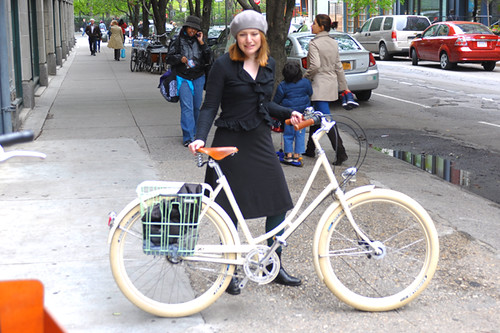
I rode the Retrovelo Klara around lower Manhattan for a total of about 5 miles. This was my first time cycling in New York City. I started out on the quiet side street where Adeline Adeline is located, then rode along the West Side Highway bicycle path for a while, then got off the path and explored the streets, making my way back to the bike shop. Probably half of my route involved riding with traffic on streets that either had no bike lane, or had the bike lane obstructed by so many vehicles that I took the car lane anyway.
Riding in a new city - and especially a city as hectic as NYC - I would not feel comfortable doing this on just any bike, but the Retrovelo's handling is confidence-inspiring. The front end is exceptionally stable: No twitchiness when starting from a stop or getting up to speed. The bicycle goes where you point it and insists on staying upright.

I would describe the Retrovelo as an intuitive bike that does not require getting used to the way a Dutch bike, or a low-trail bike, or an aggressive roadish bike might. To the typical person of my generation who grew up in North America, I think "mountain bike-ish" handling generally feels pretty intuitive: Many of us rode mountain bikes as teenagers and it's what we are used to. While I was a terrible cyclist back then, I nonetheless used my beater mountain bike to get around and probably on some level that type of handling is still engrained into my procedural memory. Of course the Retrovelo is considerably faster and more responsive than my old mountain bike ever was, as well as far more beautiful. Win/win.
Comparing the Retrovelo Klara to other bikes I have ridden in its class, I would say the handling is most similar to the Scottish Paper Bike and the Swedish Pilen. For me the Retrovelo handles considerably faster than the Pilen but a bit slower than the Paper Bike, while behaving similarly to both as far as balance and maneuverability.

As far as load capacity, the bike is equipped to carry considerable weight in front and rear, including children. Retrovelo owner K., whom I met in NYC, routinely rides with her toddler and a full load of groceries and finds it quite comfortable. She has had her stone gray Retrovelo for a couple of years now and loves it. My friend in Vienna has had her pigeon blue one for about two years as well. Retrovelo owners generally tend to have good things to say about these bikes.
As far as drawbacks, the Klara and Paula models are only available in one size - which happens to fit me perfectly but will not be suitable for everyone. At just under 40 lb, the bike is on the heavy side and could be challenging to deal with for those who plan to store it in a walk-up apartment. The missing dressguards and the lack of a full chaincase could be a deal-breaker for those who require these accessories. And some (myself included) would prefer narrower handlebars, though these can be swapped out.

Having ridden the Retrovelo around hectic NYC, my impression of the bike did not differ significantly from what it had been riding it through the Austrian countryside. Two additional years of cycling experience did not alter my impressions much either. I believe the stable handling makes the Retrovelo a good choice for beginners. The responsiveness and mountain-bikeyness make it a cool ride for more experienced cyclists. The beautiful construction makes it appealing to the vintage lovers and lugwork fetishists among us. For city riding, I felt that the 3-speed model was definitely sufficient, though others might opt for the 7/8-speed. The current retail price for a fully equipped Retrovelo Klara is $1,450 USD.
While personally I still prefer my cruddy vintage 3-speeds to anything modern I have tried in the same genre so far, when it comes to currently produced city bicycles the Retrovelo is firmly among my favourites. Many thanks to Adeline Adeline for the test ride.
 Sub-freezing temperatures and heavy snowfall dominate the mountain and complicate the flood recovery. Since Tuesday the 21st, over 77" of new snow has fallen at Paradise; as of Sunday the 26th, there was 71" on the ground (note the compaction). In Longmire, we measured 7" of new today for a total of 26" on the ground and it's still November! Winter has arrived, in full force.
Sub-freezing temperatures and heavy snowfall dominate the mountain and complicate the flood recovery. Since Tuesday the 21st, over 77" of new snow has fallen at Paradise; as of Sunday the 26th, there was 71" on the ground (note the compaction). In Longmire, we measured 7" of new today for a total of 26" on the ground and it's still November! Winter has arrived, in full force.  This was a tin tray that belonged to my mom before she met my dad. It has tulips in the design and the handle had other flowers on it. It says it is made by Rodney Kent. Apparently he made a lot of beaten tin items back in the 1920' and 30's. I also have a round plate by him with no design. I found lots of his work on the internet.
This was a tin tray that belonged to my mom before she met my dad. It has tulips in the design and the handle had other flowers on it. It says it is made by Rodney Kent. Apparently he made a lot of beaten tin items back in the 1920' and 30's. I also have a round plate by him with no design. I found lots of his work on the internet.









 The crux of the Croz Spur, photos and content courtesy of Dave Searle
The crux of the Croz Spur, photos and content courtesy of Dave Searle Pinocchio, Mont Blanc du Tacul
Pinocchio, Mont Blanc du Tacul Sometimes you just wear gear out and it simply needs to be replaced
Sometimes you just wear gear out and it simply needs to be replaced
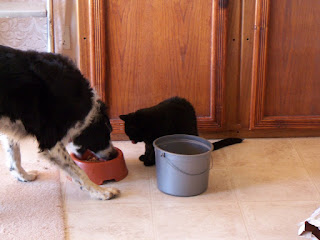

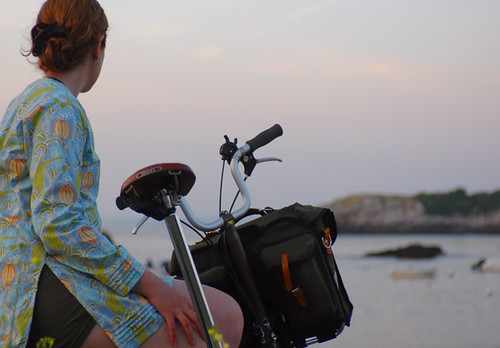

 The worn, nearly illegible grave marker for twin sons of William and Catherine Dunfee. It faces west and is in the shade most of the day.
The worn, nearly illegible grave marker for twin sons of William and Catherine Dunfee. It faces west and is in the shade most of the day.  The grave marker "wrapped" in aluminum foil and rubbed down. While still not quite totally legible, this technique brings out some of the details, including the two doves at the top of the marker. The inscription at the bottom (beneath the parents names) still is not legible and some of the numbers are hard to read.
The grave marker "wrapped" in aluminum foil and rubbed down. While still not quite totally legible, this technique brings out some of the details, including the two doves at the top of the marker. The inscription at the bottom (beneath the parents names) still is not legible and some of the numbers are hard to read.
 I have had lots of kittens that wanted to eat lots of houseplants and most are not eatable. In fact most houseplants are poisonious and should be moved to where kittens, puppies or babies can't get to them.
I have had lots of kittens that wanted to eat lots of houseplants and most are not eatable. In fact most houseplants are poisonious and should be moved to where kittens, puppies or babies can't get to them.






















 Abigail would have been pregnant with her second child at the time. Their first child, Lysander (my 3rd great-grandfather), would have been 14 months old. I still haven't found a marriage record for James and Abigail (Goodrich) Joslin but apparently their separation wasn't too long. They would have four more children, but then James disappears after the 1850 census, so perhaps, all was not well between them.
Abigail would have been pregnant with her second child at the time. Their first child, Lysander (my 3rd great-grandfather), would have been 14 months old. I still haven't found a marriage record for James and Abigail (Goodrich) Joslin but apparently their separation wasn't too long. They would have four more children, but then James disappears after the 1850 census, so perhaps, all was not well between them.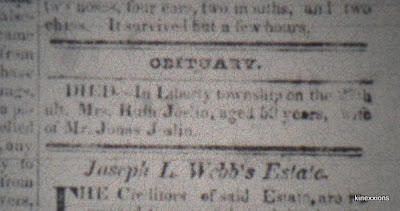 The Delaware County Historical Society and the Genealogical Society have a combined Research Room that was open from 2-4 pm on the day I was there so I spent a pleasant two hours with them.
The Delaware County Historical Society and the Genealogical Society have a combined Research Room that was open from 2-4 pm on the day I was there so I spent a pleasant two hours with them. On the right is the gravemarker for Ruth (Dyer) Joslin.
On the right is the gravemarker for Ruth (Dyer) Joslin. This is the best image I could capture of Ruth's gravemarker. It has been enhanced a bit with a little manipulation of the contrast and brightness. The inscription reads:
This is the best image I could capture of Ruth's gravemarker. It has been enhanced a bit with a little manipulation of the contrast and brightness. The inscription reads: